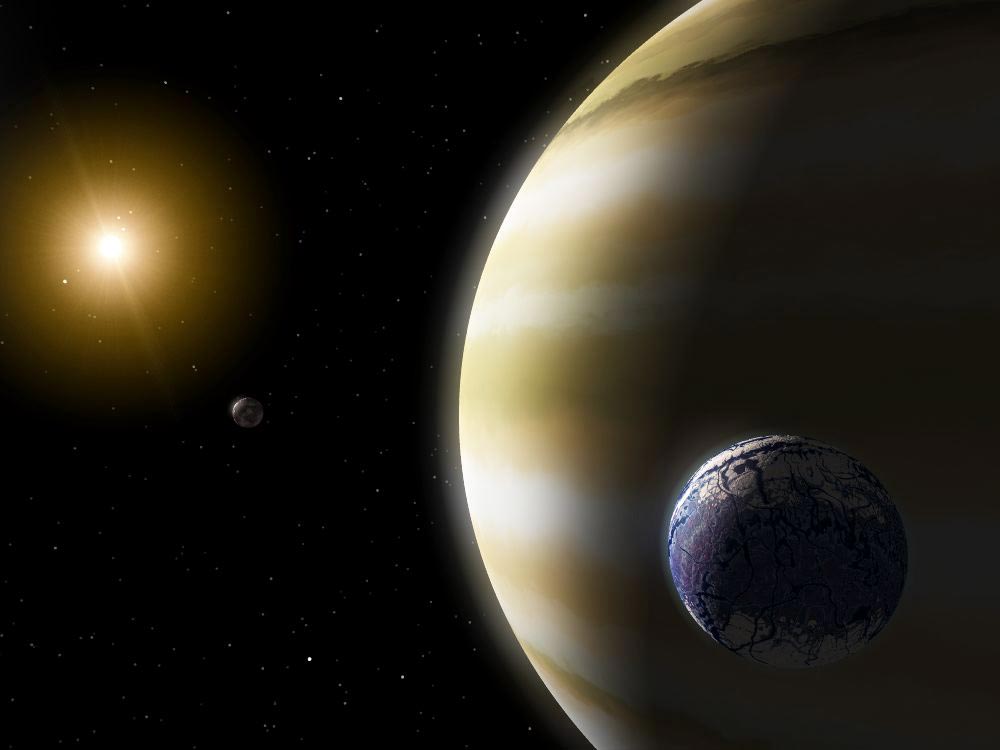An extrasolar (from outside our solar system) planet-like object, either a true planet or a brown dwarf, has been directly observed. The object, named GJ 758 B due to its orbit around the star GJ 758, is about ten to forty times the size of Jupiter and about as far from its star as Neptune is from ours.
 The first extrasolar planet was found in 1992. Since then, more than 400 such planets have been found. Most have been inferred by measuring the stars’ radial velocity rather than by direct imaging. This technique uses Doppler spectroscopy.
The first extrasolar planet was found in 1992. Since then, more than 400 such planets have been found. Most have been inferred by measuring the stars’ radial velocity rather than by direct imaging. This technique uses Doppler spectroscopy.Radial velocity is simply the velocity either directly toward or away from an observer. It can be measured by using the Doppler effect, the red or blue shift of the stars’ light as it departs or approaches the earth respectively. If a star is orbiting in our plane of sight (directly toward and away from us), the star’s emission spectrum will regularly be shifted blue or red as it goes around. The presence of a planet affects the orbit of its star and thus affects that Doppler shift.
In contrast, GJ 758 B was directly observed. Cosmologists did this by using the High Contrast Coronagraphic Imager with Adaptive Optics (HiCIAO) to subtract out the brighter light of its star. This imager is part of the new Subaru Telescope, a planet-hunting telescope based in Hawaii.
This new technique for finding extrasolar planets might usher in a new era of finding planets. Perhaps one of them will even support life!
This new technique for finding extrasolar planets might usher in a new era of finding planets. Perhaps one of them will even support life!
No comments:
Post a Comment